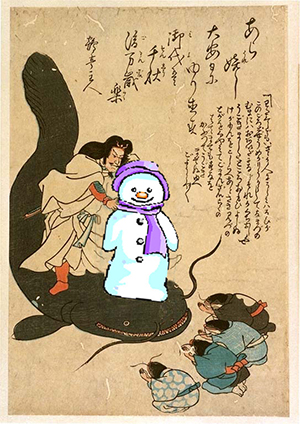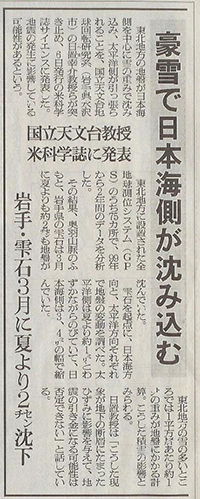- HOME >
- Recent commentary and highlights >
- Melting of snow as a possible trigger for earthquakes
Melting of snow as a possible trigger for earthquakes
The potential for earthquakes as a result of snow disappearance
Heki, K., Science, 293, 89-92, 2001.
Heki, K., Earth Planet. Sci. Lett., 207, 159-164, 2003.
 |
 |
Seasonal features observed in GPS site coordinate time series in Japan can often be explained by snow loads along the Sea of Japan side of the country’s backbone mountains. Snow loads reduce Coulomb failure stress by "clamping" faults (i.e., increasing compression normal to the fault plane). Spring thaw may thus trigger inland earthquakes, which is consistent with the observation that disastrous tremors in Japan have historically tended to occur more in spring and summer (the panel on the right is from an article published in the Asahi Newspaper). Snow plays the role of a keystone that reduces underground movement (left panel).

- The Earth: A Planet of Wonder (in Japanese)
- The Earth: A Planet of Wonder (in Japanese) mpg file (1 GB)
- The Sumatra earthquake and the earth (in Japanese)
- Why do earthquakes occur? (in Japanese)
- Another way to use GPS (in Japanese)
- Plate motion and crustal deformation observed using GPS (in Japanese)
- Changing earth as shown by gravity (in Japanese)
- Preseismic TEC enhancement (in Japanese)
- Coseismic traveling ionospheric disturbances
- Lunar gravity anomaly
- Secular subsidence in northeastern Japan
- Melting of snow as a possible trigger for earthquakes
- Small coupling in the Tokai area






